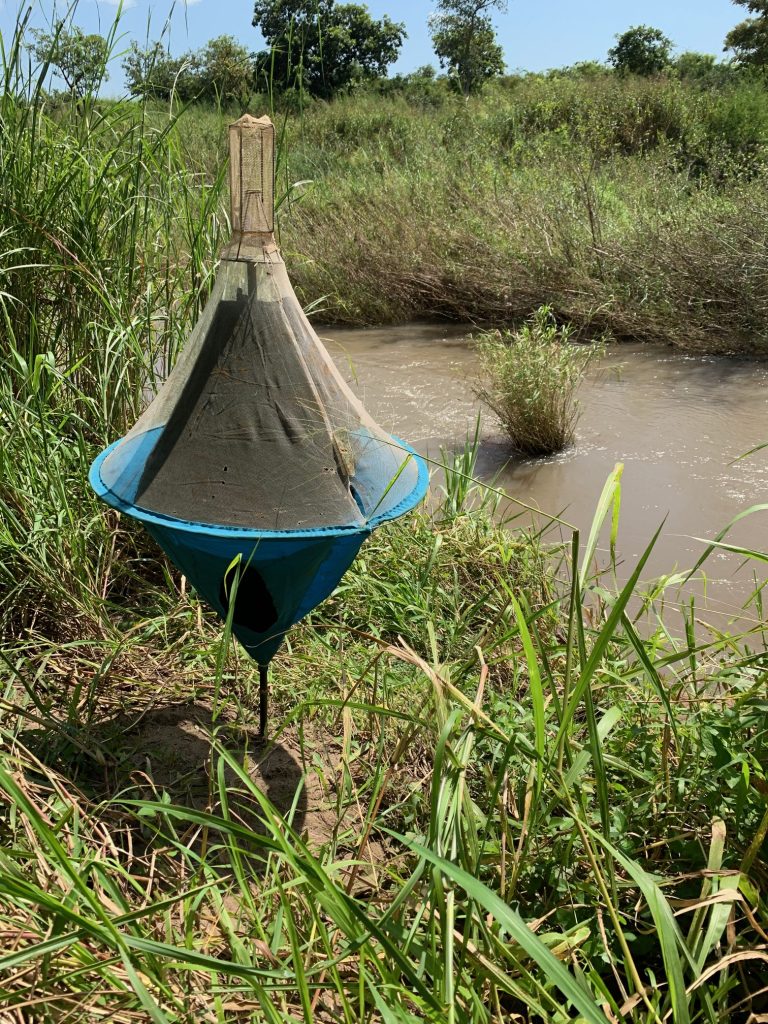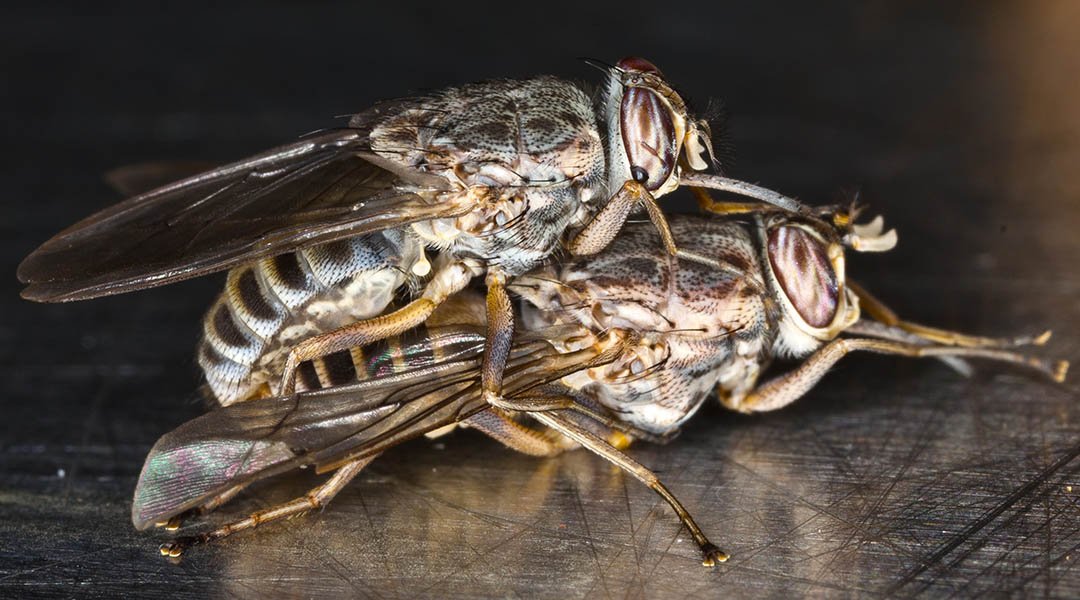Tsetse flies in Sub-Saharan Africa are biting insects and obligate blood feeders. These flies are not simply a nuisance though, as their bite can be deadly. Several species of tsetse flies are vectors for a group of protozoan parasites known as Trypanosomes. These parasites slip into the bloodstream while the fly feeds and if left untreated, migrate to the brain where after a period of debilitating illness, they kill the human host.
This condition, known as African sleeping sickness, is major problem in many African nations and while there are some promising treatments in trials, the main way of controlling this disease is to trap and kill tsetse flies.
To this end, a group of researchers from Yale University has identified potent tsetse fly sex pheromones that increase the attractiveness of traps for male flies. This not only stops them from biting in the short term but will hopefully reduce the overall population size over time.
Volatile sex pheromones
The team published the identities of several previously unknown compounds produced by tsetse flies in Science. Three of these compounds elicited strong behavioral responses in male flies and were identified as volatile sex attractants of tsetse flies.
“A volatile sex pheromone is a chemical that is produced by an animal to attract a mate,” explained Brain Weiss, co-author of this work and senior research scientist at the Yale School of Public Health. These pheromones are already used in commercial traps for common household pests. Surprisingly, no one had tried to isolate them from tsetse flies.
To isolate pheromones produced by the flies the team submerged them in a solvent and trapped the gases being released. Then using gas chromatography they separated and identified the structures of the unknown compounds. Next, the sought to observe how the flies responded to the pheromones one by one.
Driving male flies crazy
Going through each compound one by one, the team placed either a control or the new compound on opposite sides of a T-shaped tube. A fly was then released into the base of the T and observed.
What they saw was an incredibly strong attraction between male flies and three specific compounds. “The males were highly attracted,” said Weiss. “They flew out of the bottom, took a sharp left over to the piece of filter paper that had the chemicals on it.”
The team even created decoy flies using small pieces of yarn tied at one end to replicate the shape and size of a fly. When these three chemicals were placed on the decoys, they again witnessed a strong male response. “The males flew on to the decoy very quickly and stayed there and there was no similar behavioral response with any of the other compounds,” said Weiss.
Targeting bizarre tsetse reproduction
These newly identified sex pheromones are easy to synthesize, said Weiss, and can immediately be used in existing traps to boost their attractiveness to male tsetse flies. As Weiss explained, this serves two benefits one immediate and one long term. Right away more flies overall are trapped, decreasing the chances they infect a person. “But also, if you remove a large portion of the males from the population, then there’s less mates and presumably the size of the population decreases also,” explained Weiss.

Due to an interesting quirk of tsetse fly reproduction, male removal should have an outsized effect on the size of the next generation. Female tsetse’s are a rarity in the insect world in that they give birth to live pupae, which then metamorphose to adults. This is more akin to mammals than most insects, which lay many eggs and hope that some survive.
Because of this biology tsetse flies only produce one offspring a season, so reducing the number of mating events has a larger impact on population sizes moving forward. “If you can reduce the population of tsetse even a little bit, it goes a very long way,” Weiss said.
This strategy to reduce fly populations compared with insecticides, for example, also has no risks for collateral damage to other insects. Importantly, scientists have weighed in on the ethics of strategies to eliminate tsetse and deemed that localized elimination where the risks to humans are greatest is justified.
The team now hopes to find similar chemicals in other species of tsetse flies so they can bait traps in different geographic areas and efficiently target the local species spreading trypanosomes.
Reference: Shimaa A.M. Ebrahim, et al. A volatile sex attractant of tsetse flies, Science (2023). DOI: 10.1126/science.ade1877
Feature image: A mating pair of Glossina morsitans. Photo credit: Dr. Geoffrey Attardo

















